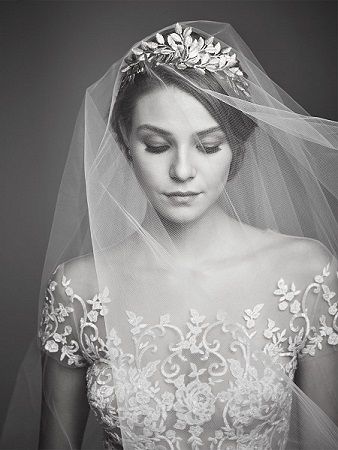 Veils are a piece of headgear that have seen a number of uses across the world. Historians place the invention of the veil sometime in early human history, with examples being found in the ancient texts and artwork of Mesopotamia. Back then, scholars believed they were worn by women of high place in society. This practice continued for millennia, carrying on even after Mesopotamia had been integrated into both Persian and Grecian civilizations. By the time Rome became the dominating force of the Mediterranean, it was commonplace for brides of all statuses to wear bright yellow veils to their weddings.
Veils are a piece of headgear that have seen a number of uses across the world. Historians place the invention of the veil sometime in early human history, with examples being found in the ancient texts and artwork of Mesopotamia. Back then, scholars believed they were worn by women of high place in society. This practice continued for millennia, carrying on even after Mesopotamia had been integrated into both Persian and Grecian civilizations. By the time Rome became the dominating force of the Mediterranean, it was commonplace for brides of all statuses to wear bright yellow veils to their weddings.
Though most Western brides do not follow tradition in regards to the color, wearing a veil to a wedding is a ritual followed by a large number of women. If you’re planning your wedding, you might feel a bit stuck choosing a veil. Deciding whether or not to have one and what style you should select can be a challenge. To sort through some options, take a look at these facts about the history of veils and see what you can discover.
A Complicated Origin
History is not always kind to women. Though the earliest examples of headscarves in society helped to show rank, the tradition took on new meaning as cultures mixed and mingled over the centuries. Religious and political influence in many nations caused veils to be worn as a way for women to protect their modesty and not shame their families. It was very common for Anglo-Saxon women of Europe to wear complicated and decadent scarves over their heads to cover the hair, neck, and shoulders. Only the face would be visible, with the rest completely hidden by the scarf.
It is this exact mentality that bred the invention of the modern bridal veil. In the 19th century, it was common for women of England to wear these pieces in white to showcase modesty and purity. Even today, people reference the fact that a bride’s attire once had to do with her virginity. You might decide you do not want to wear one yourself because you don’t agree with the historical origins. Still, symbols only hold weight in the way you allow them. The decision to have this piece incorporated into your outfit is what you make of it.
The Big Reveal
Marriage customs have changed a lot over the years, mostly for the better. The practice of arranged marriage has carried on across the world for a long while. In Western culture, a veil was often worn by a bride because the groom had likely not yet officially met the woman he would be spending his life with. After walking down the aisle with her face obscured, the bride would stand before her future husband and wait for him to lift the covering and reveal her face to his eyes.
Nowadays, attitudes toward choosing partners have shifted across culture lines. Even in India, where arranged marriage is most common, there has been a decrease in the overall number of these unions. Since most Westerners are very familiar with their partners long before a wedding, the choice to wear a veil is usually made for fashion. Incorporating a veil doesn’t need to make a statement or act as a grand reveal for it to have a special place in your attire.
Look Within
On a more romantic note, the veil has not always held such a convoluted place in wedding lore. In Jewish wedding tradition, a bride is said to wear this item for a handful of reasons. One particular reason says that obscuring the woman’s face ensures the groom is marrying the woman for her spirit and her character, rather than the superficialities of her physical appearance.
Deciding whether to include a veil in your bridal outfit can be tough. Do what feels right for you and you’re likely to love the results.
Add Your Comment